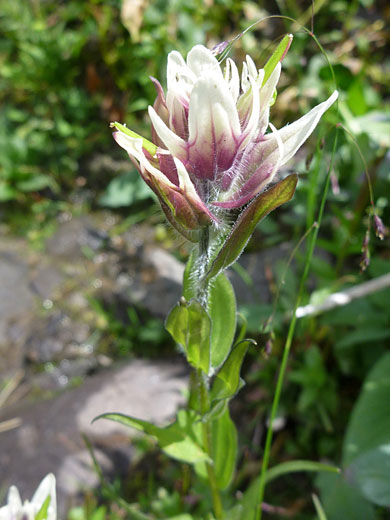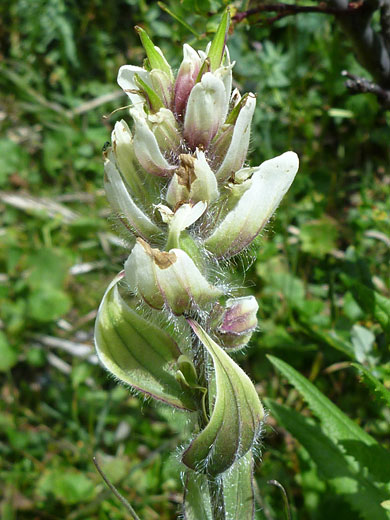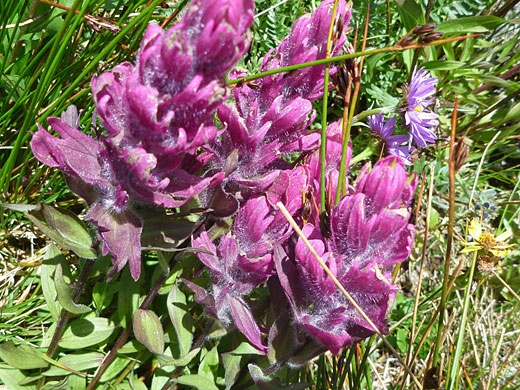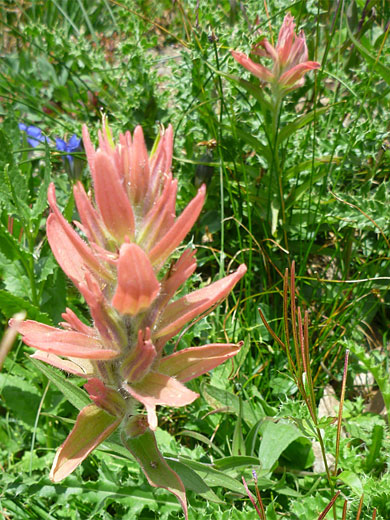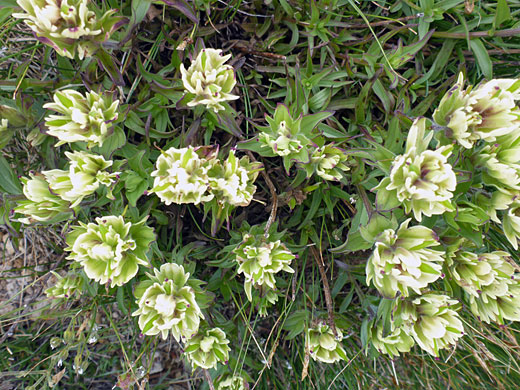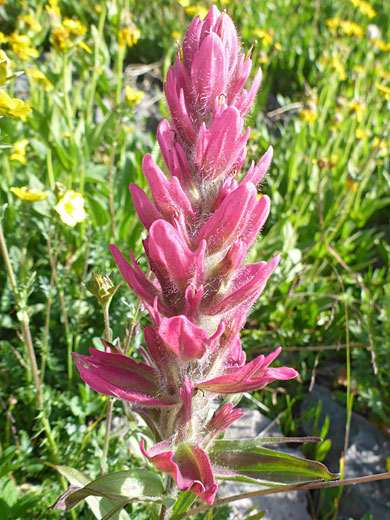Castilleja Rhexifolia, Alpine Paintbrush
Plants > Wildflowers > Orobanchaceae > Castilleja Rhexifolia
Common names:
Alpine paintbrush, rose paintbrush
Family:
Scientific name:
Castilleja rhexifolia
Main flower color:
Range:
The Rocky Mountain states
Height:
Up to 15 inches
Habitat:
Alpine meadows and open slopes; up to 12,000 feet
Leaves:
Alternate, lanceolate, up to 6 inches long. Red tints along the edges, more noticeably in leaves towards the base
Season:
June to September
Castilleja rhexifolia produces flower heads in a range of beautiful colors, including rich shades of orange, yellow and purple (often dark at the base and light, or even white towards the tip), but most are salmon pink; hybridization is thought to be responsible for some of the variation. As with all members of this genus, the colorful parts are actually modified leaves (bracts); the small, tubular, greenish-yellow flowers are inconspicuous, protruding just a little at the apex, being mostly enclosed by tubular calyces, similar in color to the rounded bracts beneath.
The bracts (which may be split into three lobes - a large central lobe and two small side lobes) and stem are quite hairy, the leaves less so. The elongated green leaves have three prominent lengthwise veins.
The bracts (which may be split into three lobes - a large central lobe and two small side lobes) and stem are quite hairy, the leaves less so. The elongated green leaves have three prominent lengthwise veins.
All Contents © Copyright The American Southwest | Comments and Questions | Contribute | Site Map





